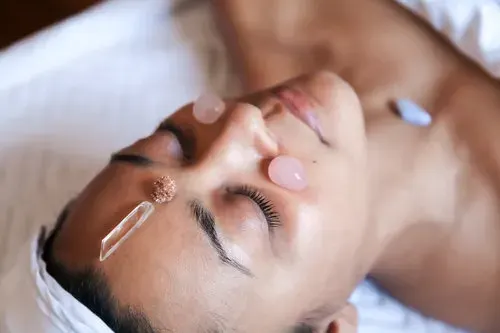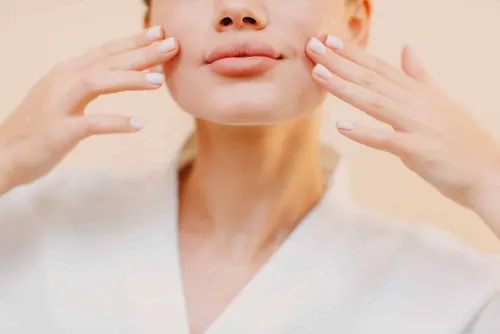Introduction
Ayurvedic facials offer a holistic approach to skincare that is tailored to individual needs based on the ancient principles of Ayurveda. This traditional Indian practice emphasizes the balance of the body’s three doshas—Vata, Pitta, and Kapha—to promote overall well-being. Each facial is customized to address specific skin concerns by using natural ingredients and herbal formulations that align with a person’s unique constitution. Ayurvedic facials not only enhance the appearance of the skin but also aim to restore harmony within the body and mind. With benefits ranging from improved hydration to reduced signs of aging, these facials are becoming increasingly popular among those seeking a natural and effective skincare solution. Below are some key features and benefits of Ayurvedic facials that highlight their transformative potential.
1. Personalized Treatments
Ayurvedic facials are deeply personalized, beginning with an assessment of an individual’s skin type and dosha. Practitioners evaluate factors such as dryness, oiliness, sensitivity, and other skin concerns to determine the most suitable treatment plan. This tailored approach ensures that each facial addresses the specific needs of the client, utilizing ingredients that harmonize with their unique constitution. By focusing on individual characteristics, Ayurvedic facials provide optimal results and enhance overall skin health.

2. Use of Natural Ingredients
One of the defining features of Ayurvedic facials is the use of natural and herbal ingredients. These treatments often incorporate botanicals like turmeric, neem, saffron, and rose petals, which are known for their nourishing and healing properties. The absence of harsh chemicals or synthetic additives makes Ayurvedic facials suitable for all skin types, including sensitive skin. Clients can enjoy the benefits of effective skincare without the risk of irritation or adverse reactions commonly associated with conventional products.

3. Deep Cleansing
Ayurvedic facials emphasize thorough cleansing as a foundational step in skincare. The treatments typically involve herbal scrubs and steam applications that help remove impurities, dead skin cells, and excess oils from the surface of the skin. This deep cleansing process not only enhances the effectiveness of subsequent treatments but also promotes clearer skin by preventing clogged pores and breakouts. Clients often leave feeling refreshed and rejuvenated with a clean slate for further nourishment.

4. Hydration and Nourishment
Hydration is a key benefit of Ayurvedic facials, as they utilize moisturizing oils and herbal packs designed to deeply nourish the skin. Ingredients like coconut oil and almond oil are commonly used to hydrate without clogging pores, ensuring that the skin remains supple and radiant. This focus on hydration is particularly beneficial for individuals with dry or aging skin, as it helps restore moisture levels while promoting elasticity and softness.

5. Anti-Aging Benefits
Ayurvedic facials are effective in combating signs of aging through their emphasis on rejuvenation and nourishment. The combination of herbal ingredients and techniques used during these treatments stimulates collagen production, which is essential for maintaining youthful skin structure. Regular sessions can lead to visible improvements in fine lines, wrinkles, and overall texture, resulting in a more youthful appearance over time.

6. Stress Relief
The holistic nature of Ayurvedic facials extends beyond physical benefits; they also promote mental well-being through relaxation techniques incorporated into the treatment process. Gentle facial massages not only enhance circulation but also help alleviate stress by activating marma points—energy centers similar to acupressure points in traditional Chinese medicine. Clients often leave feeling not only rejuvenated in their appearance but also more relaxed and centered.

7. Balancing Doshas
Ayurvedic facials aim to balance the three doshas—Vata, Pitta, and Kapha—within individuals to promote overall health and well-being. Each dosha is associated with specific qualities that can affect both physical appearance and emotional state. By assessing an individual’s dosha before treatment, practitioners can customize facial techniques and products that align with their needs, helping restore harmony within the body while enhancing skin health.

8. Treats Specific Skin Conditions
Ayurvedic facials are effective in addressing various skin conditions such as acne, rosacea, pigmentation issues, and dryness. The use of targeted herbal formulations allows practitioners to create bespoke treatments that specifically combat these concerns while promoting healing from within. For example, neem may be used for acne-prone skin due to its antibacterial properties, while saffron can help brighten complexions affected by pigmentation.

9. Promotes Blood Circulation
The facial massage techniques employed during Ayurvedic treatments stimulate blood circulation in the face, which enhances nutrient delivery to skin cells while promoting detoxification through lymphatic drainage. Improved circulation contributes to a healthier complexion by ensuring that oxygen-rich blood reaches all areas of the skin effectively. Clients often notice an immediate glow following treatment due to this revitalized blood flow.

10. Long-Lasting Results
The benefits of Ayurvedic facials extend beyond immediate results; regular treatments can lead to long-lasting improvements in overall skin health and appearance. By incorporating Ayurvedic principles into daily skincare routines—such as using herbal products at home—clients can maintain their results over time while fostering a deeper connection between their inner wellness and outer beauty. This holistic approach encourages sustainable practices that support ongoing skincare success.

